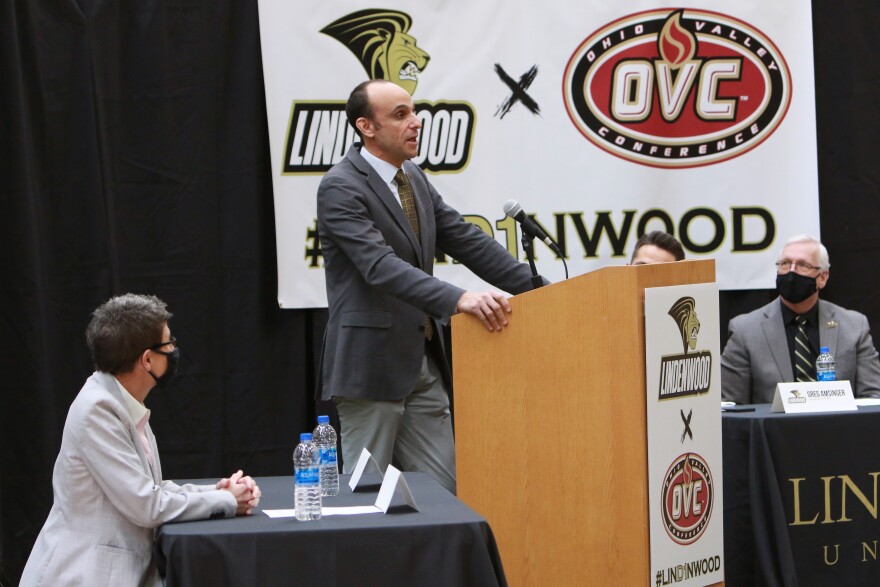For the first time since 1949, the St. Louis region will have NCAA Division I football locally.
Lindenwood University in St. Charles announced Wednesday that 18 of its athletic teams, including football, will join the Ohio Valley Conference next year. The last local college to have a Division I football team was St. Louis University, which dropped the sport in 1949.
Lindenwood, which has an overall enrollment of about 7,000 students, has played in Division II since 2010.
“This is a milestone moment,” said Lindenwood President John Porter. “This transition has the potential to drive enrollment, raise university visibility and make Lindenwood a desired location for improved community engagement.”
The decision to move to the highest level of college athletics was not taken lightly, Porter said. A team of administrators and outside consultants evaluated the financial viability of such a move for five months before determining it would help support Lindenwood’s long-term plans.
The Lindenwood Lions will begin competing in regular-season and Ohio Valley Conference tournaments in the 2022-23 season. They’ll become a full-fledged Division I school in 2026, which would be the first year they would be eligible for automatic bids to NCAA tournaments.
OVC Commissioner Beth DeBauche promised Lindenwood’s student-athletes they were joining a conference that practiced bold leadership and nurtured communities.
“We have a strategic plan that is unique for an athletics conference,” she said. “We’re establishing a community that supports one another, a community that gives back and a community that allows our student athletes to achieve all that they can so they too can be contributing members of their local communities once they graduate.”
A spokesman for Lindenwood's athletics department said the administration had been in contact with other Division I conferences to find a home for sports like men's wrestling, women's ice hockey, and lacrosse, which are not sponsored by the OVC.
Moving to Division I gives Lindenwood the ability to award more in scholarship money, as Division II schools can only hand out partial scholarships. It also brings access to broadcast revenue streams, as the Ohio Valley Conference has a deal with ESPN to carry at least 600 games on the streaming platform ESPN+.
Though the majority of the OVC’s teams are located in Tennessee, none is more than a six-hour drive from St. Charles, making it relatively easy for families of local athletes to travel to games. In addition, Southern Illinois University Edwardsville and Southeast Missouri State University in Cape Girardeau are also in the conference.
“So you’ll have some partners and some good rivals,” DeBauche said.
The Lions have won championships as both an independent and Division II school, but success at the highest level is far from guaranteed. For example, SIU-E, which joined the Ohio Valley in 2008, made it to the Elite 8 of the Division II men’s basketball tournament in 2005. But the team has not had a winning record since 2008, its last year in Division II.
Lindenwood’s decision marks the second departure from the Great Lakes Valley Conference this month. The University of Southern Indiana, in Evansville, announced Feb. 8 it would also seek reclassification to Division I.
“We extend our best wishes to both Lindenwood University and the University of Southern Indiana as they begin the reclassification process to Division I next year," Great Lakes Valley Conference Commissioner Jim Naumovich said in statement. "The conference remains committed to providing services to our remaining 13 institutions.”
The GLVC also includes Quincy University, the University of Missouri-St. Louis and Missouri University of Science and Technology.
Follow Rachel on Twitter: @rlippmann





